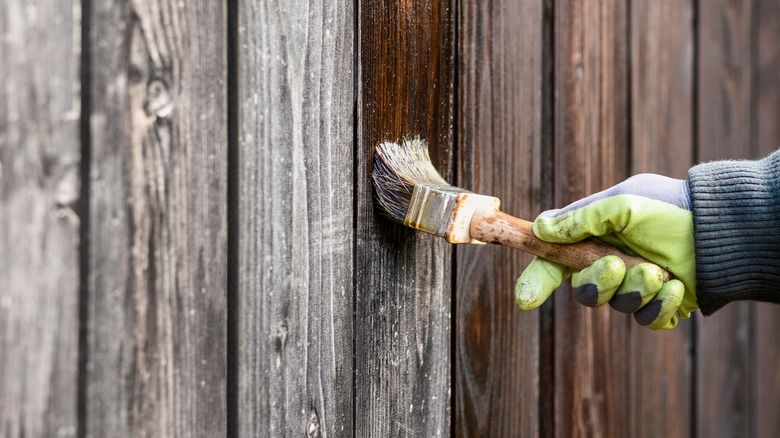Maintain Your Fence With A 2-In-1 Product That Saves Time (But Does It Save Money?)
Wooden fences take a beating from the elements. Sun, rain, snow, and wind all take their toll, making regular wooden fence maintenance a must if you want to make your fence last as long as possible. Using a 2-in-1 stain and sealer is a quick way to provide the most protection, but does it save money? The answer is: probably not, unless you are adding up savings far into the future.
A gallon of Valspar Pre-Tinted Semi-transparent Exterior Wood Stain and Sealer at Lowe's will cost $47.98. A gallon of Thompson's WaterSeal Clear Water-based Exterior Waterproofer at the same store costs $17.98. That's a $30 difference just for one gallon; you will likely need to multiply that by many gallons to cover your entire fence.
Stain provides the same protections as sealing a fence, but with a few extra benefits. Both protect from water and fungus damage, but stains add UV protection to the equation, helping to combat the sun's harmful rays. That's why the pros recommend staining your fence — or any outdoor wood — over just sealing it. Ultimately, it will make the fence last longer, which will likely present larger savings over the long term. Check out these tips for staining your fence to make the job go smoothly no matter which product you choose.
Why not just stain and skip the sealer?
Peruse the pages of a home improvement store website, and you will likely find that most of the stain options for outdoor wood also contain sealer, though a few regular stain options still exist. They may not save you much money, however. For instance, a gallon of Cabot Wood Protector Clear Exterior Wood Stain will run you $49.98, which is slightly more expensive than the stain and sealer combo we mentioned. Whether you want a stain or a 2-in-1 combo will likely come down to personal preference.
Product reviews reveal some of the same complaints for both the stain and the combos. Many reviewers take issue with the color the products turn their wood, though a few do have longevity complaints. One reviewer said that, after less than three years in the Texas sun, their outdoor area needs refinishing. While an individual product may make claims about how long you can go between applications, the reality is, it will depend largely on factors like the condition of your fence and how much wear and tear it takes from the elements. This is why the pros say you should re-stain at the first signs of wear, though it will likely need to be redone around every three years.
If you are wondering whether paint is a better solution, learn about paint vs. stain when it comes to exterior applications.

